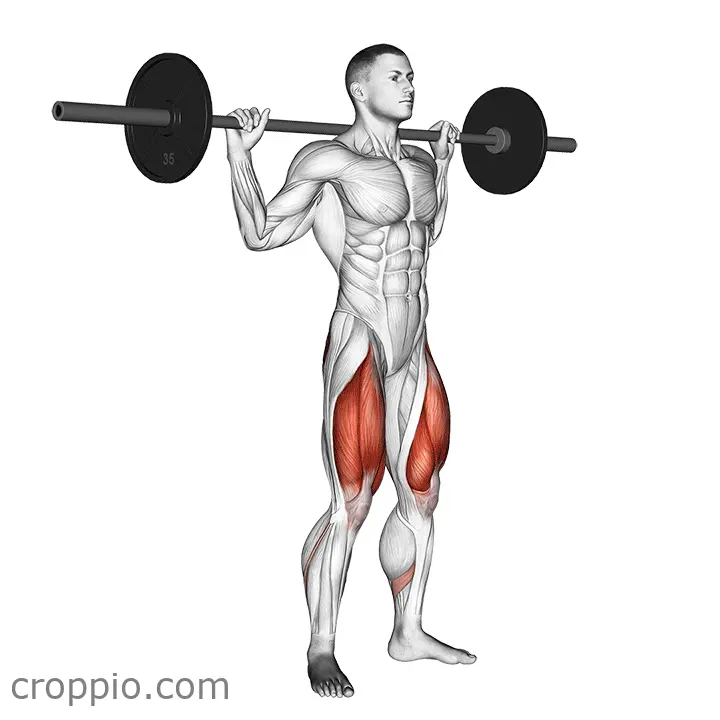Bodyweight Squat

Muscles Involved
The bodyweight squat primarily targets the muscles of the lower body, focusing specifically on the quadriceps, hamstrings, glutes, and calves. The quadriceps are the main movers during the squat, responsible for extending the knee as you rise. The hamstrings and glutes work synergistically to stabilize the hips and control the descent into the squat. Additionally, the calves engage to maintain balance and support the lower leg throughout the movement. Secondary muscles, including the core, also play a crucial role by helping to maintain posture and support the spine during the exercise.
Top Mistakes
- Letting the knees cave in or extend too far past the toes, which can cause strain on the joints.
- Not keeping the chest up and back straight, leading to poor posture and potential injury.
- Not squatting low enough; going only halfway limits the effectiveness of the exercise.
- Failing to engage the core, which can compromise stability and balance.
Execution Tips
To perform a bodyweight squat correctly, start by standing with your feet shoulder-width apart, toes slightly pointed outwards. Engage your core and keep your chest up throughout the movement. As you bend your knees to squat down, initiate the movement by pushing your hips back, as if you're sitting on an invisible chair. Aim to keep your weight distributed on your heels to prevent shifting forward. Your thighs should descend parallel to the ground or lower while keeping your knees aligned with your toes. Once you reach the bottom of the squat, pause briefly before pushing through your heels to rise back to the starting position, engaging your glutes and quadriceps in the ascent.
Workouts
The bodyweight squat can be effectively integrated into various workout routines. For beginners, starting with 3 sets of 10-15 reps can be an excellent way to build endurance and strength. As strength improves, incorporate variations such as jump squats or squat pulses for added intensity. Pairing bodyweight squats with lunges and glute bridges creates a balanced lower-body workout. Incorporate this sequence into a circuit format, allowing for short rests between exercises to create a comprehensive workout routine.
Conclusion
The bodyweight squat is a foundational exercise that enhances lower body strength, stability, and mobility. It requires no equipment, making it accessible and versatile for all fitness levels. Regular practice can improve athletic performance, increase functional movement patterns, and contribute to weight management by boosting metabolism. Embrace the bodyweight squat as a staple in your fitness regime for comprehensive leg development and overall body strength.



